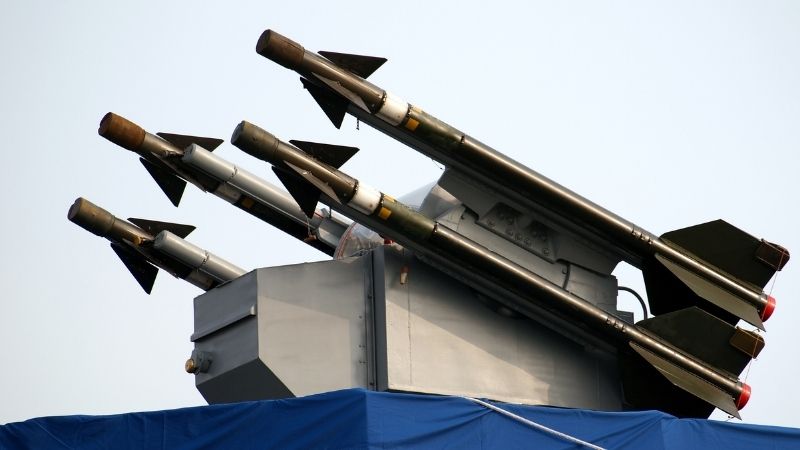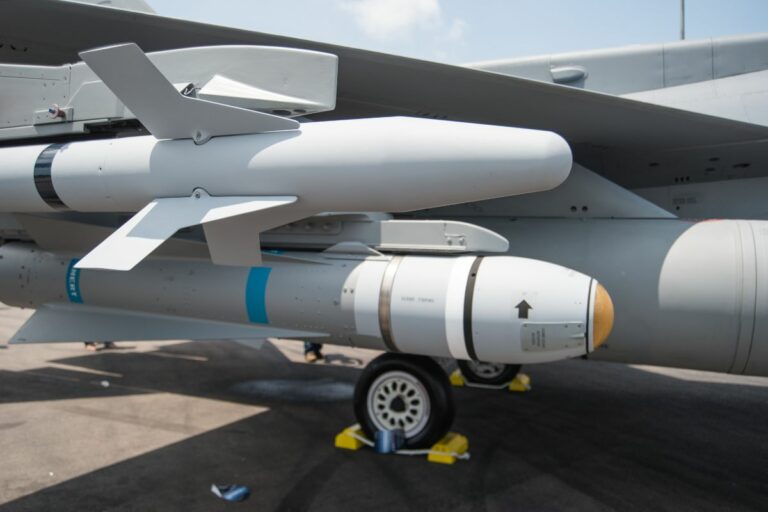Missile vs. Nuke: The Key Differences You Need to Know
If you’re like most people, you probably don’t know the difference between a missile and a nuke. And if that’s the case, you’re definitely not alone. In this blog post, we will discuss the key differences between these two types of nuclear weapons. After reading this post, you’ll be an expert on missiles and nukes!
“Nuke” is the short form of “nuclear weapon” whereas a missile is a delivery system for nuclear warheads and other types of payloads. Nukes can be delivered via missile or other means, such as dropped from an airplane.
Now that we’ve cleared that up, let’s take a closer look at each of these weapons.
Nuke

Definition
A “nuke”, or nuclear weapon, is an explosive device that derives its destructive force from nuclear reactions, either fission or a combination of fission and fusion.
History
Nukes were first developed during World War II as a way to end the war quickly and with minimal Allied casualties. The first nuke, “Little Boy”, was dropped on the Japanese city of Hiroshima on August 06, 1945.
How it works
A nuclear weapon is essentially a bomb that uses either fission or fusion to create an explosion.
In fission weapons, such as “Little Boy”, atoms are split apart to release energy.
In fusion weapons, such as the “Fat Man” nuke dropped on Nagasaki, atoms are fused together to release energy.
Delivery
Nukes can be delivered via missile, airplane, or other means.
In Hiroshima, the “Little Boy” nuke was delivered via airplane, while the “Fat Man” nuke in Nagasaki was delivered via missile.
Effects
Nukes are incredibly destructive and can level entire cities. The effects of a nuclear explosion depend on a number of factors, including the type of weapon (fission or fusion), the yield (how much energy is released), the altitude of the explosion, and the weather.
In general, nuclear explosions can cause four types of damage:
-Blast damage, which is caused by the shock wave from the explosion
-Thermal radiation damage, which is caused by the heat from the explosion
-Radiation damage, which is caused by radioactive fallout
-Electromagnetic pulse damage, which is caused by an intense burst of electromagnetic radiation
Missiles
Missiles are designed to carry explosives, with control and precision, to a designated target and at high speeds. Missiles are rocket-propelled weapons but because of their enhanced built-in technology, they are far more advanced than rockets for military uses.
Missiles were developed and manufactured by the Germans in World War 2. They are controlled by wireless remote controls and are only used for military purposes, as opposed to rockets that are used for entertainment, space travel, military uses, and more.
Parts of a missile
5 systems make up a guided rocket, otherwise known as a missile. They are as follows:
· Guidance System.
The guided system in a missile is used to adjust and stabilize the flight path. An operator, or pilot, guides the missile to the intended target to ensure superior accuracy.
· Warhead.
The warhead part of the missile is the bomb. It can be explosive or toxic, either way, it is delivered by the missile to an exact target location for the explosion.
The warhead can be detonated by several options, depending on how the missile was designed. From physical target detonation to remote detonation operated by a military service member, among other options that you can read more about here.
· Engine.
Missiles are designed to be powered by a type of engine, usually a rocket engine or in some cases, a jet engine.
· Flight System.
The flight system works with the targeting and/or guidance system to account for possible maneuvers and necessary changes to the flight path.
· Targeting System.
Target accuracy is critical to the missile doing what it was designed to do. The targeting system and the guidance system work together with radars and satellites, to determine the target and fly the missile truly to its mark.
What Types of Missiles are There?
There are multiple types of missiles used for military purposes, and each of these missile types has various other missiles listed under them. You can see all of them here for further information.

Here are the three types of missiles used in the military:
· Guided Missiles
A self-propelled, airborne weapon, typically used for short-range fire within the immediate battle zone.
· Cruise Missiles (Strategic)
Cruise missiles are long-range missiles. They carry warheads over vast distances, with the assistance of their in-built guided system. These self-navigating missiles fly through the air at supersonic speeds, can fly at low altitudes, and are self-navigating.
· Ballistic Missiles (Strategic)
Most of the ballistic missile’s flight is not guided and is unpowered. Ballistic missiles have three main parts, the powered, free-flight, and re-entry. Yes, re-entry. Generally, most ballistic missiles are designed to exit the earth’s atmosphere at an angle that allows the missile to re-enter and ‘fall’ towards its target.
Ballistic miles are typically designed for extremely long ranges. Some ballistic missiles that have been designed do not exit the earth’s atmosphere and involve the first two parts of the ballistic system (Powered and free flight).
Summary: the difference between nuke and missile
To sum up, the “nuke” or “nuclear weapon” is only the explosive part of the weapon. It can be sent in a missile (one kind of delivery system) or by other means.
It’s like asking the difference between diesel and trucks. The diesel is generally delivered by a truck, but even if it comes from a ship or jerrycans, it’s still diesel inside, and trucks can also deliver water or milk.
So, don’t mix up the two. One is the transportation method, while the other is the carried object.
If you like that type of post, you should also check these other ones:






